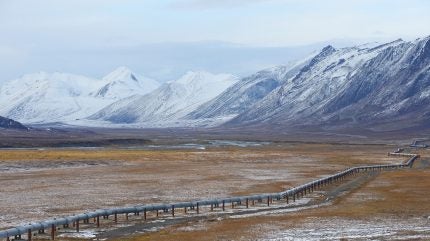
The US administration is set to implement significant restrictions on oil and gas development in Alaska’s Arctic region, reported Bloomberg.
A century ago, the US set aside 23 million acres, called the National Petroleum Reserve, on Alaska’s North Slope as an emergency oil supply.

Discover B2B Marketing That Performs
Combine business intelligence and editorial excellence to reach engaged professionals across 36 leading media platforms.
This move, which could be finalised within days, represents one of President Joe Biden’s most substantial efforts to curtail fossil fuel exploration on federal lands, aligning with his climate change mitigation and land conservation goals.
The proposed restrictions would not affect the Willow oil project by ConocoPhillips, which is expected to produce 600 million barrels of oil.
However, industry leaders are concerned that the new plan could prevent the establishment of similar large-scale projects in the National Petroleum Reserve-Alaska (NPR-A), a key area for industry growth bolstered by recent large discoveries.
Executives and Alaska lawmakers are increasingly vocal about their concerns, fearing that the initiative could hinder development across the reserve, even on existing leases.

US Tariffs are shifting - will you react or anticipate?
Don’t let policy changes catch you off guard. Stay proactive with real-time data and expert analysis.
By GlobalDataThe opposition includes a diverse group, from Alaska Natives to oil producers from the lower-48 states.
Santos, with more than a million acres leased in the reserve, stated that the proposal could impact entire projects.
ConocoPhillips, holding 156 leases, cautioned that the new rules could breach contracts and deter investment.
Armstrong Oil & Gas also expressed concerns about potential restrictions on building necessary infrastructure for its 1.1 million-acre leasehold.
Officials from the administration argue that the changes are crucial for protecting sensitive areas that are home to wildlife such as polar bears, migratory birds and the Teshekpuk caribou herd.
Announcing the measure last year, Secretary of the Interior Deb Haaland said: “We must do everything within our control to meet the highest standards of care to protect this fragile ecosystem.”
The proposal includes a mechanism for expanding protected areas every five years and sets higher standards for future development in the reserve.
The Interior Department has indicated that the regulation would not affect existing leases.
However, the draft rule text suggests giving the government extensive power to restrict access to these leases, requiring clear evidence that oil leasing and infrastructure development would have minimal adverse effects on habitats.
As per the Interior Department, the proposal would not significantly impact the nation’s energy supply.
The US Geological Survey estimates that the rock formations beneath the reserve hold around 8.7 billion barrels of recoverable oil.
Opponents argue that the plan shifts the reserve’s focus from oil development to conservation, which they believe contradicts congressional intent.
Alaska Oil and Gas Association president Kara Moriarty said: “The current statute says that the primary purpose is to increase domestic oil supply as expeditiously as possible, but the rule takes a completely different premise.”





